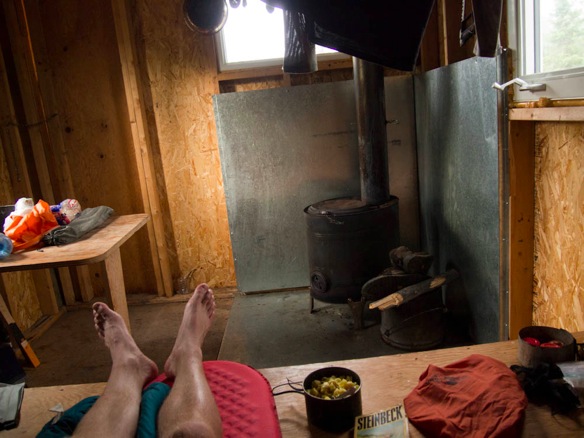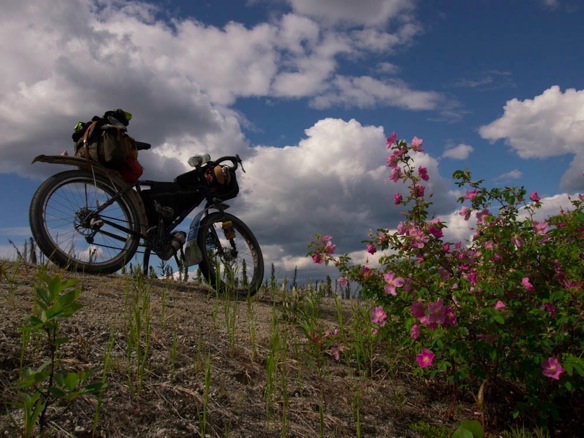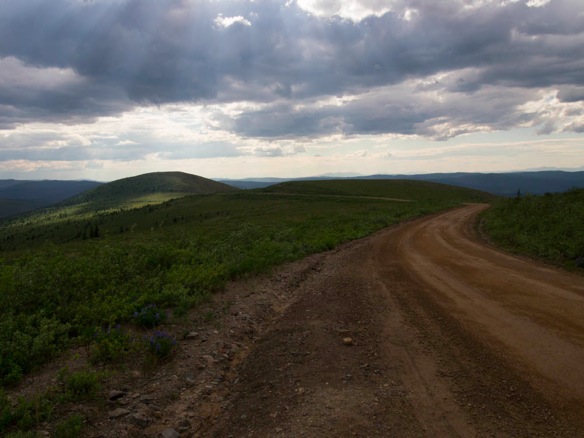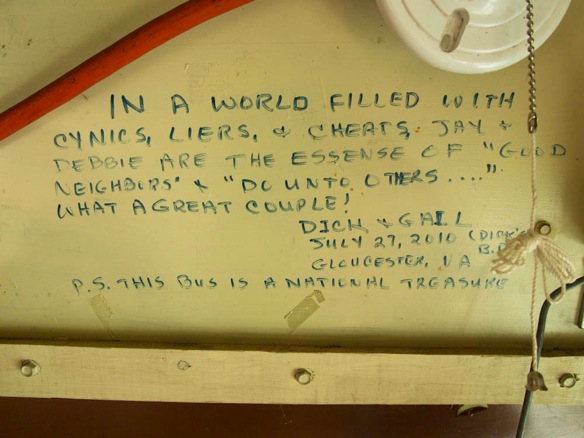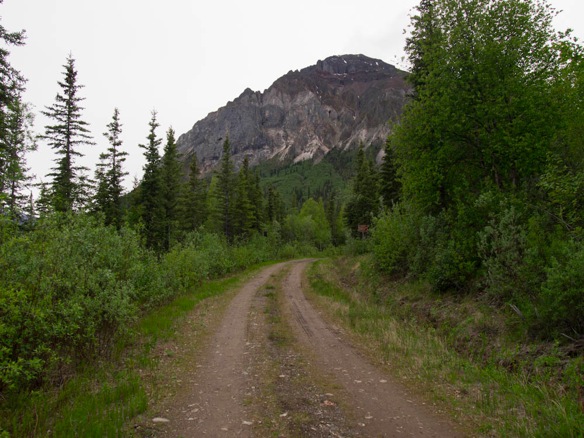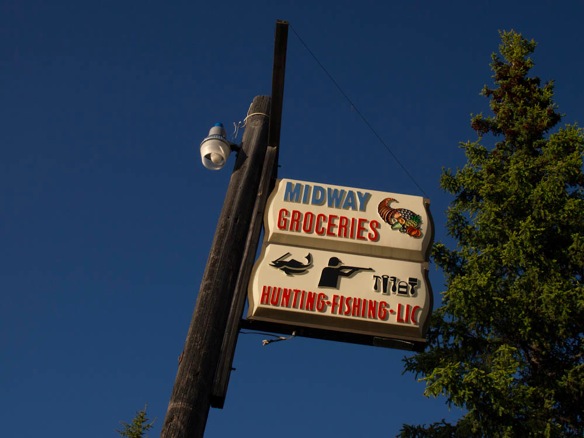Don’t listen to my advice about selecting a touring bike, as I’m hefting a purple snow bike around the continent. As for good advice, maybe these bike have something to offer. This will become a regular feature; as I see them, I’ll share them. From $200 to $4000; 32mm or 94mm tires, 26″ or 700c; carbon and steel; racks, bags, rafts and plastic totes, these bike will do it. This is the antidote for all those pictures of shiny new touring bikes on the internet– these are real bikes.
First, Matt’s Surly Pugsley with fat tires, coruplast fenders, vintage EPIC Designs framebag (from Eric Parsons, of the renamed Revelate Designs), and Alpaca packraft. Matt lives on a sailboat in Juneau, having sailed north though the Inside Passage from the Puget Sound. This is a true Alaska bike, especially with the raft. I spotted Matt’s name in the logbook at the cabin on the Trans-Canada Trail from Braeburn, dated from 2010. Surly Racks support Ortlieb panniers in the rear and the raft up front. Titec-made Jeff Jones-designed bars, Ergon grips and Paul Thumbies are standard on sensible upright touring bikes. Endomorph tires are mounted front and rear at 30 psi for paved stretches.



The odd couple:

Ela’s recent purchase of a used Kona Fire Mountain made my day. She leads mountain bike trips in Skagway for a local company, but found some time to look around up north. I love her “system”– a plastic tote on a standard rear rack, a couple stuff sacks and an NRA lunchbox-turned-handlebar bag.
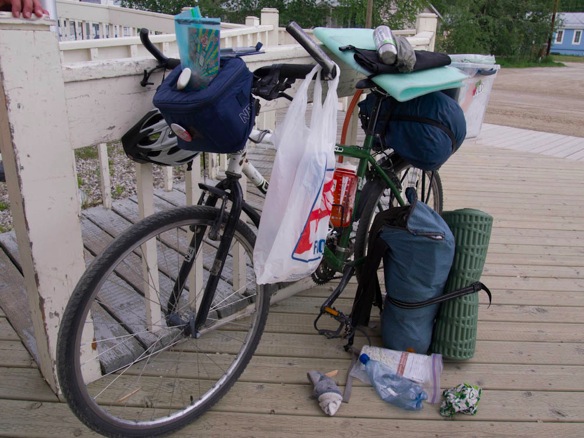



And of course, Dave and Sarah’s custom Robin Mather tourers. Hopefully, I’ll run into them again to catch a better look. Next time I see them Dave will be riding without front panniers, and with a new Porcelain Rocket frame bag.


And these old guys from Juneau left me half a cinnamon roll in Braeburn, which I blame for my muddy wanderings on the Trans-Canada Trail. While enjoying and ruminating over the roll and a cup of coffee, I spotted the trailhead behind the Braeburn Lodge. They ride matching Bruce Gordon BLT (Basic Loaded Touring) bikes. These are the Petaluma, California bikes, not the Taiwanese BLT bikes offered more recently.


Adam has attempted an Argentina-to-Alaska ITT, but relaxed when he reached the northern part of South America due to muscle strains. Still only 103 from Ushuaia, he is within two weeks of Deadhorse at Prudhoe Bay. He was missing one chainring bolt entirely, and the other was replaced with standard stainless hardware store fare. The hash marks on the seat tubes signify the number of days on the road. A Trek TT bike was used on purely paved portions. The ride supports autism.



This French rider was on a 1986 Alex Singer, built with Reynolds 531 All-Terrain tubing. With a small pair of rear panniers and a Gilles Berthoud handlebar bag he was quite proud of his minimal load, communicated despite poor English and my basic French. The frame has ridden PBP twice and has been repainted by paintbrush recently, seemingly with standard house paint. The bike features Campagnolo derailleurs, Stronglight cranks and headset, 3TTT stem and bars, Schwalbe tires on a Mavic Cosmos wheelset, and a Gilles Berthoud saddle. The brake levers were the only Shimano bits to be seen.
I would ride this bike without the racks, and with a huge framebag.



This father and son pair from San DIego and Mexico City were on skinny-tired cross bikes. They laughed when I asked if they planned to ride those tires to Inuvik, on the gravel Dempster Highway. Of course not, they were also packing (or had shipped) 32mm knobby tires. They’re a long way from the paved stretches of southern California, and they remarked that they’d rather be riding tires like mine even on the “sealed” roads. Even a 32mm tire is narrow to me, especially with a full load of panniers. The son was on a Bailey AL/carbon cross frame, while the father was on a steel Kelly cross frame. Incidentally, the lightweight steel frame was said to be “wobbly”; no complaints about the other. Both were riding skinny Continental tires on the road with front and rear Ortlieb panniers.


















































